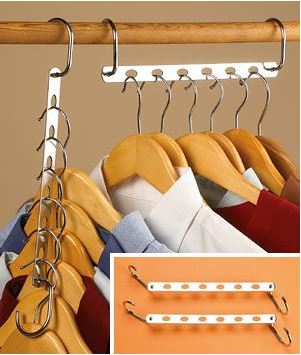I was doing my apparel internship with one of the top jacket manufacturer . There I found that lining – Body – Sleeve matching was one of major bottleneck in production. Matching operator would pick up sewn front, lining and sleeve hang them all up on an iron rod. Then she would pick up one front body piece and search for matching lining and sleeve. At one point of time there used to be atleast 50-100 lining and sleeve. So finding a particular number lining , sleeve from a stack of 50 -100 would take a lot of time . Clearly this is a highly inefficient process which affects loading in assembly line . To solve this matching /pairing problem many apparel manufacturers make use of pigeon holes.
Pigeon holes has been effective in solving garment matching problems. But in jacket sewing pigeon hole is not feasible because of the following reasons:
- Jackets should be on hangers so that it retains the shape given by pressing. This means that small pigeon holes won’t be able to accommodate an unfolded jacket part.
- Matching WIP is more – work content in front, lining and sleeve has a lot of difference so it meant that there used to be some matching WIP. There would just not be enough pigeon holes to accommodate all that WIP.
The problem to be solved here is that we need to arrange all the garment pieces in such a way that they can be identified and retrieved easily and also should take up as less space as possible.
Solution : Use of Multihangers as workaid for matching / pairing
Multihanger is a hanger which can store individual hangers. This provides an effective way of organizing garments. If number labelling is used with multihangers the correct garment can be picked directly without searching.

How Multihangers can aid quick Matching of garment panels ?
Every multihanger is numbered from 0 to 10 and every slot is numbered from 0-10. This individual slot is used for storing hanger containing the garment panel. Hence if the operator could be trained to identify the position of pieces by combination of number on multihanger and individual slot number the time lost in searching can be minimized.
Below is a diagram which illustrates the numbering of multihangers and individual slot .

In the above shown arrangement (img 2) if you have to pick garment number 23 just go to multihanger 2 and slot 3 and you’ll find garment number 23 as illustrated in below image 3.

This approach could bring down the matching time to less than 5 seconds.
Other benefits of multihanger
- Kanban control : If there is no space left on the hangers that means overproduction so actions can be taken to minimize the production at overproducing section and production of other section can be increased
- Easy identification of unmatched pieces – if a piece from old old sequence is still on the hanger and new sequence has come the piece can be moved to unmatched area so that efforts can be taken to pair it immediately.
What to do if you don’t have Multihanger?
At the time when I did this multihangers were not available. So I started off with ropes, tying knots to create space for hangers . It works just fine and could be implemented as a trial before taking the decision to invest on multihangers.

Please feel free to comment your views on use of multihangers below this post.

Fine as far as I can see but is just a variant on a well worn approach and tackles the symptom and not the disease. The real problem is lack of production balancing and control. (Unfortunately in India there is an absence of good production management skills and therefore the problem you have highlighted and tried to solve is prevalent)
Many years ago I saw the same problem tackled using chains on a side branch of a switchtrack system with a hangar attached to the chain for the body. Each chain was kept in number sequence and could be moved when all components were ready. Not perfect but it worked. Your system is just an improvement on that basic approach that used already available equipment. Why would the many companies with similar hanging systems invest in this?
Rightly said that this doesn’t solve the root cause. Production balancing should always be the first priority. I would be interested in knowing how many available hanger systems are addressing this problem so will get into it. Thanks for sharing your thoughts.